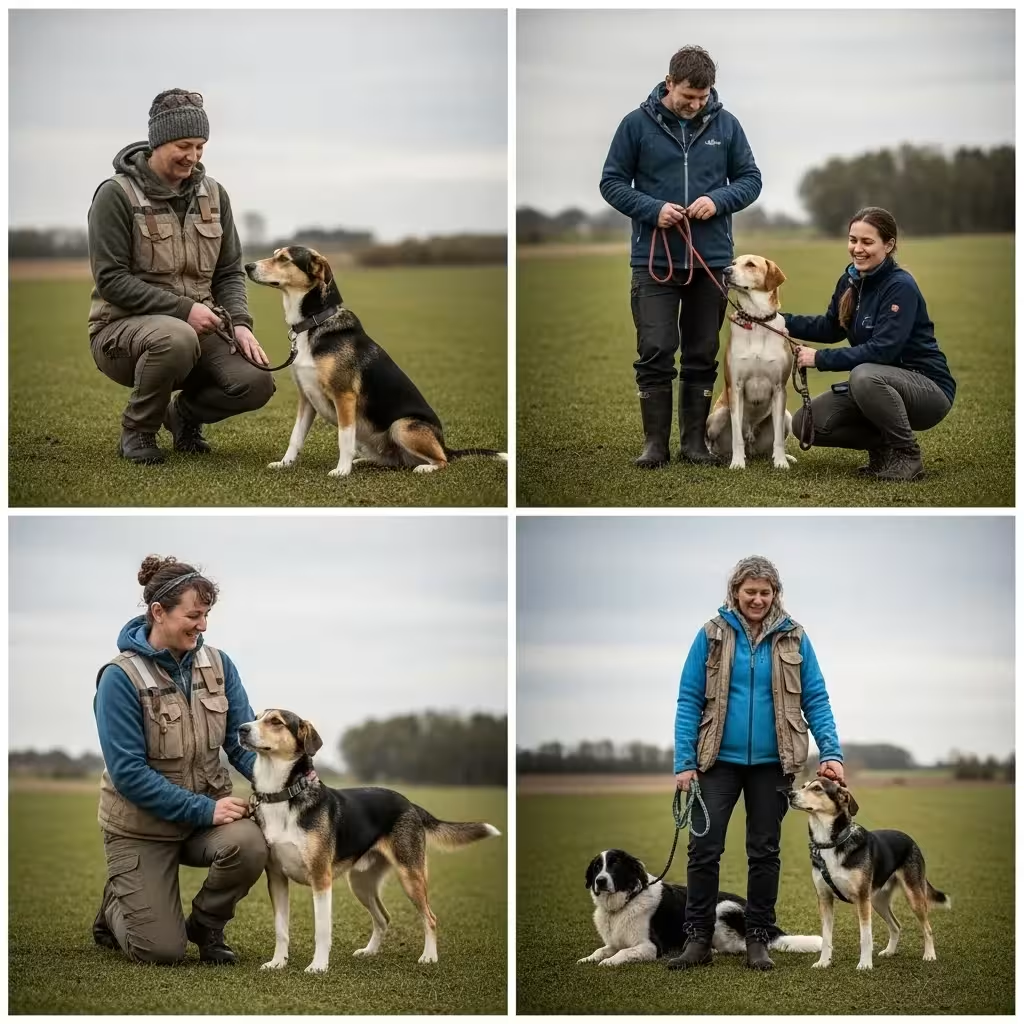
How to Help Your Dog Live Longer: The 5 Pillars of Canine Longevity
Genetics may load the gun, but lifestyle pulls the trigger. While you can’t change your dog’s breed, you have tremendous power to influence their healthspan—the number of years they live in good health. Focusing on these five key areas is the best strategy for anyone wondering how to help your dog live longer.
Pillar 1: Proactive Veterinary Care
A strong relationship with a veterinarian is the cornerstone of a long life for your dog. Don’t wait for a problem to arise. Annual wellness exams (or semi-annual for senior dogs over age 7) allow your vet to catch subtle changes before they become serious issues.
This includes staying current on core vaccinations and consistent, year-round parasite prevention. Fleas, ticks, and heartworms are not just annoyances; they transmit serious and sometimes fatal diseases. Prevention is far safer and more effective than treatment.
Dental health is one of the most overlooked aspects of canine longevity. Periodontal disease is incredibly common and involves more than just bad breath. Bacteria from infected gums can enter the bloodstream and damage vital organs like the heart, liver, and kidneys. Daily tooth brushing with a dog-specific toothpaste, along with professional cleanings under anesthesia as recommended by your vet, can literally add years to your dog’s life. Information on pet dental care is available from trusted sources like the American Veterinary Medical Association (AVMA).
Pillar 2: Optimal Nutrition and Weight Management
Obesity is a major health crisis for pets, and it’s a primary factor in shortening lifespans. Extra weight puts chronic strain on joints, exacerbates arthritis, increases the risk of diabetes and heart disease, and can even contribute to some forms of cancer.
The single most important tool for owners is learning to assess their dog’s Body Condition Score (BCS). This is a hands-on scale used to evaluate body fat. You don’t need a scale to do it.
Worked Mini-Example: Performing a BCS Check
1. The Rib Check: Gently run your hands along your dog’s sides, over their ribcage. In a dog at an ideal weight (a BCS of 4 or 5 on a 9-point scale), you should be able to easily feel the individual ribs with a slight fat covering, similar to feeling the back of your hand.
2. The Profile Check: Look at your dog from the side. You should see a clear “abdominal tuck,” where the belly slopes up from the chest to the hind legs.
3. The Overhead Check: Look at your dog from above. You should see a visible, hourglass-shaped waist behind the ribs. If your dog is shaped like a barrel, they are likely overweight.
Work with your vet to determine your dog’s ideal weight and the correct number of calories they need each day. Use a measuring cup for every meal—don’t just guess. Remember that treats should make up no more than 10% of their total daily caloric intake. Choose a high-quality food appropriate for their life stage (puppy, adult, senior) and consult your vet before making any drastic diet changes, especially for dogs with medical conditions.
Pillar 3: Consistent Physical and Mental Exercise
Exercise is crucial for maintaining a healthy weight, strong muscles, and a happy mind. The type and amount of exercise should be tailored to your dog’s breed, age, and physical condition. A Jack Russell Terrier may need an hour of running and chasing, while a senior Shih Tzu might do better with three shorter, gentle walks per day.
Mental exercise is just as important as physical. A bored dog is often a stressed or destructive dog. Enrichment activities prevent boredom and build confidence. This can include food-puzzle toys, “find the treat” games, or learning new cues using positive reinforcement—a training method that uses rewards like treats or praise to encourage desired behaviors.
Worked Mini-Example: Training a “Touch” Cue
Goal: Teach your dog to touch their nose to your hand on command. This is a great way to build focus and can be used to redirect them from unwanted behaviors.
Step 1: Hold your open palm a few inches from your dog’s nose. The moment their nose touches your hand, say “Yes!” in an excited tone and immediately give them a small, high-value treat.
Step 2: Repeat this 5-6 times in a short session. Keep it fun and fast.
Step 3: Once your dog is eagerly bopping your hand with their nose, start adding the verbal cue. Say “Touch!” just before you present your hand. Mark and reward the touch.
Step 4: Gradually start presenting your hand at different heights and angles. Keep sessions short (1-2 minutes) and positive.
Pillar 4: A Safe and Secure Environment
A safe home environment prevents accidents and poisonings that can tragically cut a life short. This means securing trash cans, keeping cleaning chemicals locked away, and being aware of common household hazards. Many human foods are toxic to dogs, including xylitol (a sweetener found in gum and peanut butter), grapes, raisins, onions, garlic, and chocolate. Keep the number for the ASPCA Animal Poison Control center handy: (888) 426-4435.
Safety outside the home is just as vital. A secure leash and a well-maintained fence prevent dogs from running into traffic. In the car, dogs should be safely secured in a crate or with a canine seatbelt harness to prevent injury in case of a sudden stop or accident.
Pillar 5: Emotional Well-being and Stress Reduction
The connection between mental and physical health is powerful. Chronic stress can weaken the immune system and exacerbate health problems. A dog’s emotional well-being is supported by a predictable daily routine, a safe and quiet place to rest, and a strong, positive bond with their family.
Learn to read your dog’s body language to recognize signs of stress, such as lip licking, excessive yawning when not tired, a tucked tail, or “whale eye” (showing the whites of their eyes). Understanding these signals allows you to remove them from situations they find overwhelming. Using humane, positive training methods builds trust and confidence, while aversive methods based on fear or pain can create anxiety and damage the human-animal bond.
















1 thought on “”
I enjoy your articles but wonder why Pekinese are never mentioned in any of your articles. As an owner of 4 over a span of time I am a true fan. The four that I have had and still have one are very loving, calm and very loyal. The one I have now has never met a stranger but is not fond of other dogs. She is over 13 years old and very healthy and active.